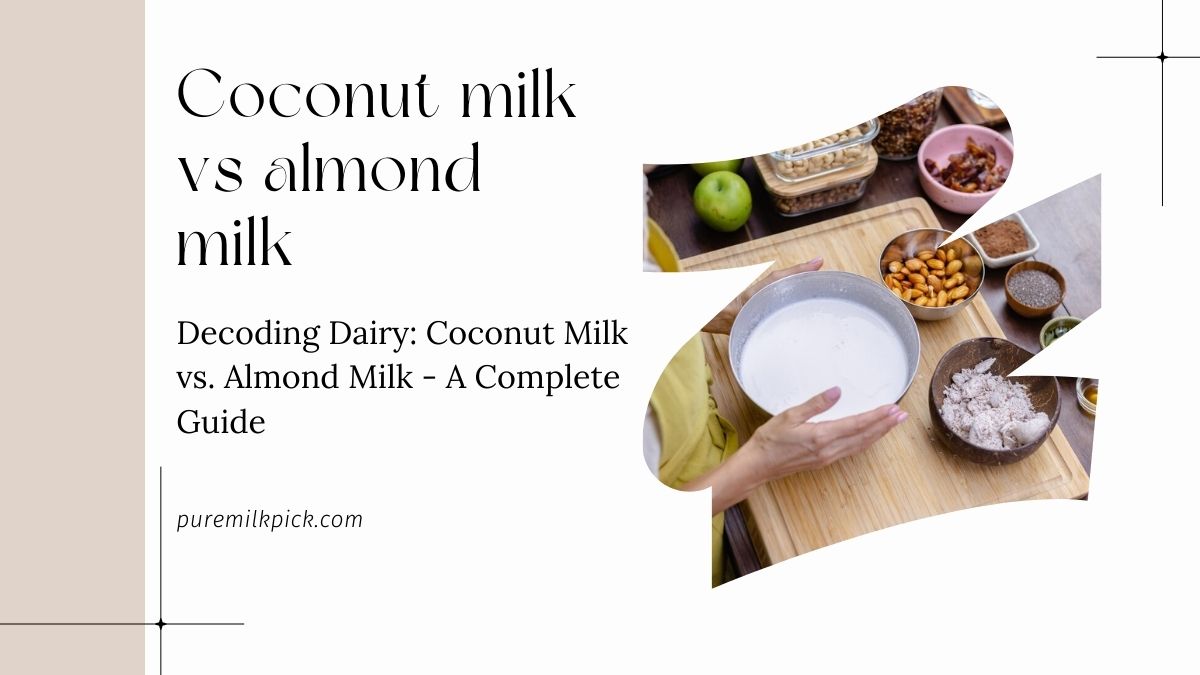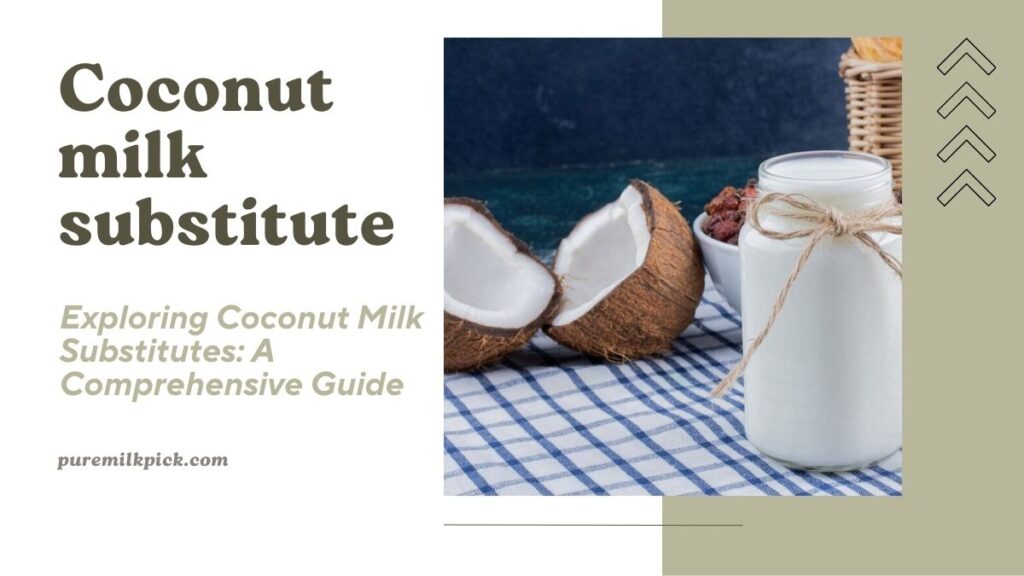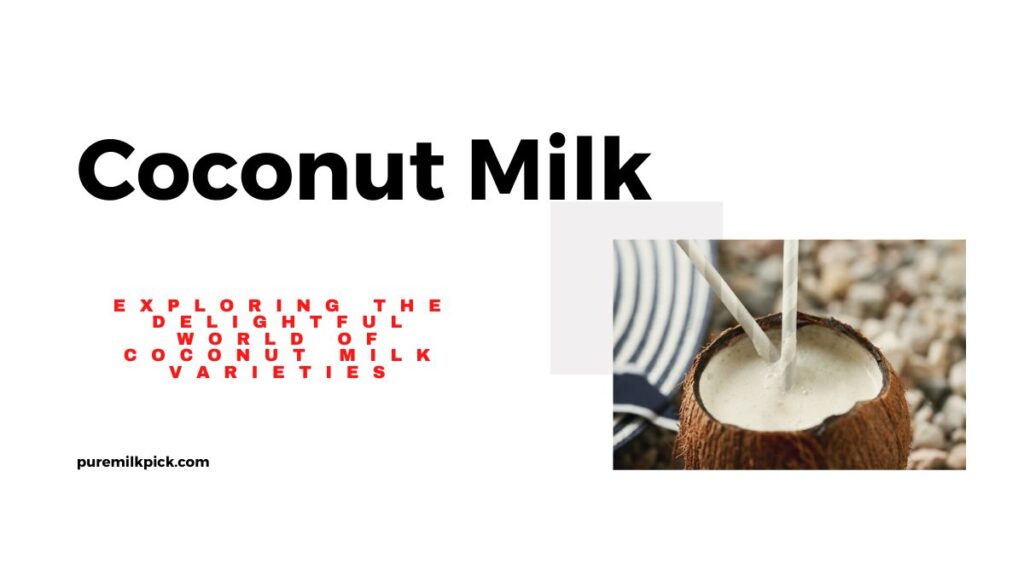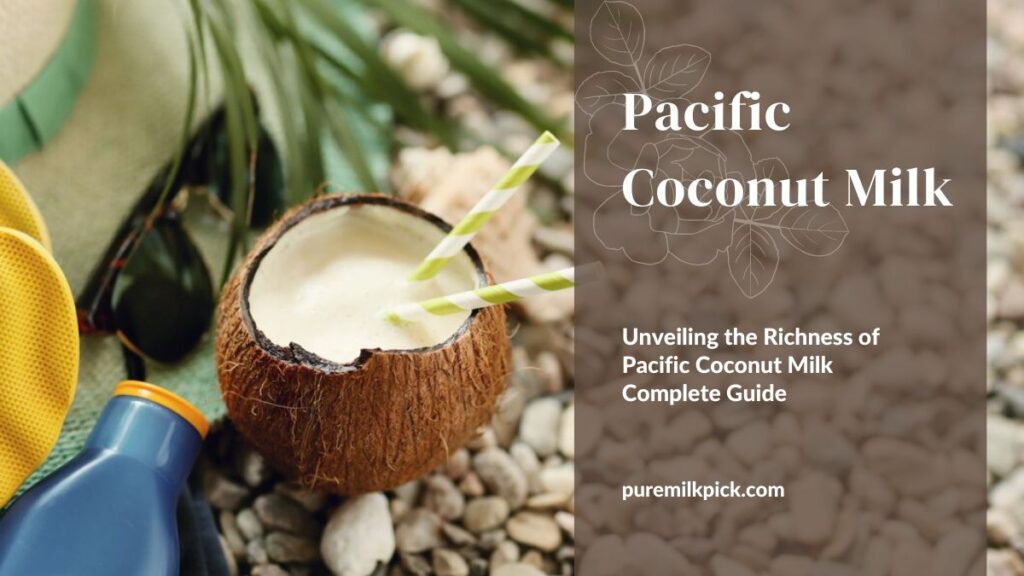In recent years, the dairy aisle has witnessed a significant transformation, with an array of plant-based milk alternatives gaining popularity. Among these, coconut milk and almond milk stand out as two prominent contenders. But which one is right for you? In this comprehensive guide, we’ll delve into the nuances of coconut milk and almond milk, exploring their nutritional profiles, culinary applications, environmental impact, and more. Whether you’re a seasoned vegan or simply curious about dairy alternatives, join us as we navigate the world of plant-based milk.
Understanding Coconut Milk
What is coconut milk?
Coconut milk is derived from the grated flesh of mature coconuts. It’s a creamy, rich liquid with a distinct tropical flavor. Unlike coconut water, which is found naturally in young coconuts, coconut milk is extracted by blending the grated coconut flesh with water and then straining the mixture.
Nutritional profile of coconut milk
Coconut milk is prized for its nutrient density. It contains healthy fats, including medium-chain triglycerides (MCTs), which are believed to offer various health benefits. Additionally, coconut milk is a good source of vitamins C, E, and B vitamins, as well as minerals like potassium, magnesium, and iron.
Read More: Exploring Coconut Milk Substitutes: A Comprehensive Guide
Culinary uses and flavor profile
One of the standout features of coconut milk is its versatility in the kitchen. It adds a rich, creamy texture to both sweet and savory dishes, making it a staple ingredient in cuisines around the world. From curries and soups to smoothies and desserts, coconut milk lends a tropical twist to any recipe.
Sustainability factors
While coconut milk offers numerous culinary and nutritional benefits, it’s essential to consider its environmental impact. Coconut cultivation can vary widely in terms of sustainability practices, with issues such as deforestation and habitat destruction being major concerns in some regions. However, when sourced responsibly, coconut production can support local economies and biodiversity.
Exploring Almond Milk
What is almond milk?
Almond milk is made by blending almonds with water and then straining the mixture to remove the solids. The result is a creamy, slightly nutty-flavored milk alternative that has gained popularity among consumers seeking dairy-free options.

Nutritional composition
Almond milk is lower in calories and fat compared to coconut milk, making it a popular choice for those watching their calorie intake or looking to reduce their saturated fat consumption. It’s also rich in vitamin E, an antioxidant that plays a crucial role in skin health and immune function.
Flavor profile and versatility
Almond milk has a mild, slightly sweet flavor that pairs well with both sweet and savory dishes. It can be used as a substitute for dairy milk in almost any recipe, from cereal and coffee to baked goods and creamy sauces. Some people prefer almond milk for its lighter texture and subtle nuttiness.
Environmental impact
Despite its popularity, almond milk has faced criticism for its environmental footprint, particularly concerning water usage. Almond cultivation requires significant amounts of water, leading to concerns about water scarcity in regions where almonds are grown. However, advancements in sustainable farming practices and water-efficient irrigation systems are helping to mitigate these issues.
Health Considerations
Comparative health benefits and drawbacks
When it comes to health considerations, both coconut milk and almond milk offer unique advantages and drawbacks. Coconut milk is higher in saturated fat but contains beneficial MCTs, while almond milk is lower in calories and fat but may lack some of the nutritional richness found in coconut milk.

Potential allergens and intolerances
While coconut milk and almond milk are generally well-tolerated by most people, allergies and intolerances are always a possibility. Coconut allergies are relatively rare but can occur, particularly in individuals with tree nut allergies. Similarly, almond allergies are also a concern for some individuals, necessitating alternative milk options.
Role in specific dietary lifestyles
Both coconut milk and almond milk are staples in various dietary lifestyles, including vegan, paleo, and lactose-free diets. Their versatility and nutritional profiles make them suitable alternatives for individuals with dietary restrictions or preferences.
Impact on cholesterol levels and heart health
The effects of coconut milk and almond milk on cholesterol levels and heart health have been a topic of debate among researchers. While coconut milk’s saturated fat content has raised concerns about its impact on cholesterol levels, some studies suggest that its MCT content may have neutral or even beneficial effects. On the other hand, almond milk’s lower fat content may be preferable for individuals seeking to manage their cholesterol levels.
Environmental Impact
Sustainability of coconut and almond production
The sustainability of coconut and almond production is a complex issue influenced by various factors, including agricultural practices, land use, and water management. Coconut cultivation is generally considered more sustainable than almond cultivation, as coconut trees require fewer resources and can thrive in diverse ecosystems.
Water usage and land requirements
One of the primary environmental concerns associated with almond production is its intensive water usage. Almonds are typically grown in arid regions where water is scarce, leading to conflicts over water resources and environmental degradation. In contrast, coconut trees are well-adapted to tropical climates and require less irrigation, making coconut cultivation relatively less water-intensive.
Packaging and transportation considerations
Another aspect of the environmental impact of coconut milk and almond milk is their packaging and transportation. Both products are often sold in cartons or bottles made from various materials, including plastic, paper, and Tetra Pak. Choosing products with minimal packaging and opting for locally sourced options can help reduce the carbon footprint associated with their production and transportation.
Culinary Applications
Cooking and baking with coconut milk vs almond milk
When it comes to cooking and baking, coconut milk and almond milk each offer distinct advantages. Coconut milk’s creamy texture and tropical flavor make it a favorite in curries, soups, and desserts, while almond milk’s lighter consistency and nutty flavor are well-suited for smoothies, cereal, and baked goods.

Flavor nuances and recipe compatibility
The choice between coconut milk and almond milk often comes down to personal preference and the specific requirements of a recipe. Some dishes may benefit from coconut milk’s richness and depth of flavor, while others may be better complemented by almond milk’s subtle nuttiness. Experimenting with different milk alternatives can lead to exciting culinary discoveries and creative adaptations of traditional recipes.
Substitution tips and tricks
If a recipe calls for coconut milk but you prefer the taste of almond milk, or vice versa, fear not—many recipes are flexible enough to accommodate substitutions. In most cases, you can swap coconut milk for almond milk and vice versa without significantly altering the outcome. However, it’s essential to consider the flavor and texture differences between the two milks and adjust seasoning or thickening agents as needed.
Cost Comparison
Price differences between coconut milk vs almond milk
When comparing the cost of coconut milk vs almond milk, several factors come into play, including brand, packaging size, and geographic location. Generally, almond milk tends to be slightly more expensive than coconut milk, primarily due to the higher production costs associated with almonds and the intensive water requirements of almond cultivation.
Factors influencing price fluctuations
The price of coconut milk and almond milk can fluctuate depending on various factors, such as seasonal availability, global demand, and market competition. Additionally, specialty or organic versions of these products may command higher prices due to their perceived quality and sustainability credentials.
Value for money
Ultimately, the value for money of coconut milk vs almond milk depends on individual preferences, dietary needs, and budget considerations. While almond milk may be pricier, its lower calorie and fat content may be worth the investment for some consumers. Conversely, coconut milk’s rich flavor and nutrient density may justify its higher price tag for others.
Conclusion
In conclusion, the choice between coconut milk vs almond milk ultimately comes down to personal preference, dietary considerations, and culinary needs. Both options offer unique flavors, nutritional benefits, and culinary versatility, making them valuable additions to any kitchen pantry. Whether you’re lactose intolerant, vegan, or simply looking to explore new flavors, coconut milk, and almond milk provide delicious alternatives to traditional dairy products. By understanding their differences and considering their respective advantages and drawbacks, you can make informed choices that align with your health, environmental, and culinary values.
Frequently Asked Questions (FAQs)
Both coconut milk and almond milk can be part of a weight loss plan, but the choice depends on individual preferences and dietary goals. Almond milk is lower in calories and fat compared to coconut milk, making it a popular choice for those looking to reduce calorie intake. However, coconut milk contains beneficial medium-chain triglycerides (MCTs), which may support weight loss by increasing feelings of fullness and boosting metabolism.
Yes, both coconut milk and almond milk can be used as substitutes for dairy milk in various recipes, including soups, smoothies, baked goods, and sauces. However, it’s essential to consider the flavor and consistency differences between dairy and non-dairy milk when making substitutions. Coconut milk tends to have a richer, creamier texture and a subtle tropical flavor, while almond milk has a lighter consistency and a mild nutty taste.
While coconut milk and almond milk are generally considered safe for consumption, there are a few potential health risks to be aware of. Coconut milk is high in saturated fat, which, when consumed in excess, may contribute to elevated cholesterol levels and heart disease risk. Individuals with tree nut allergies should also exercise caution when consuming almond milk, as allergic reactions can occur.



